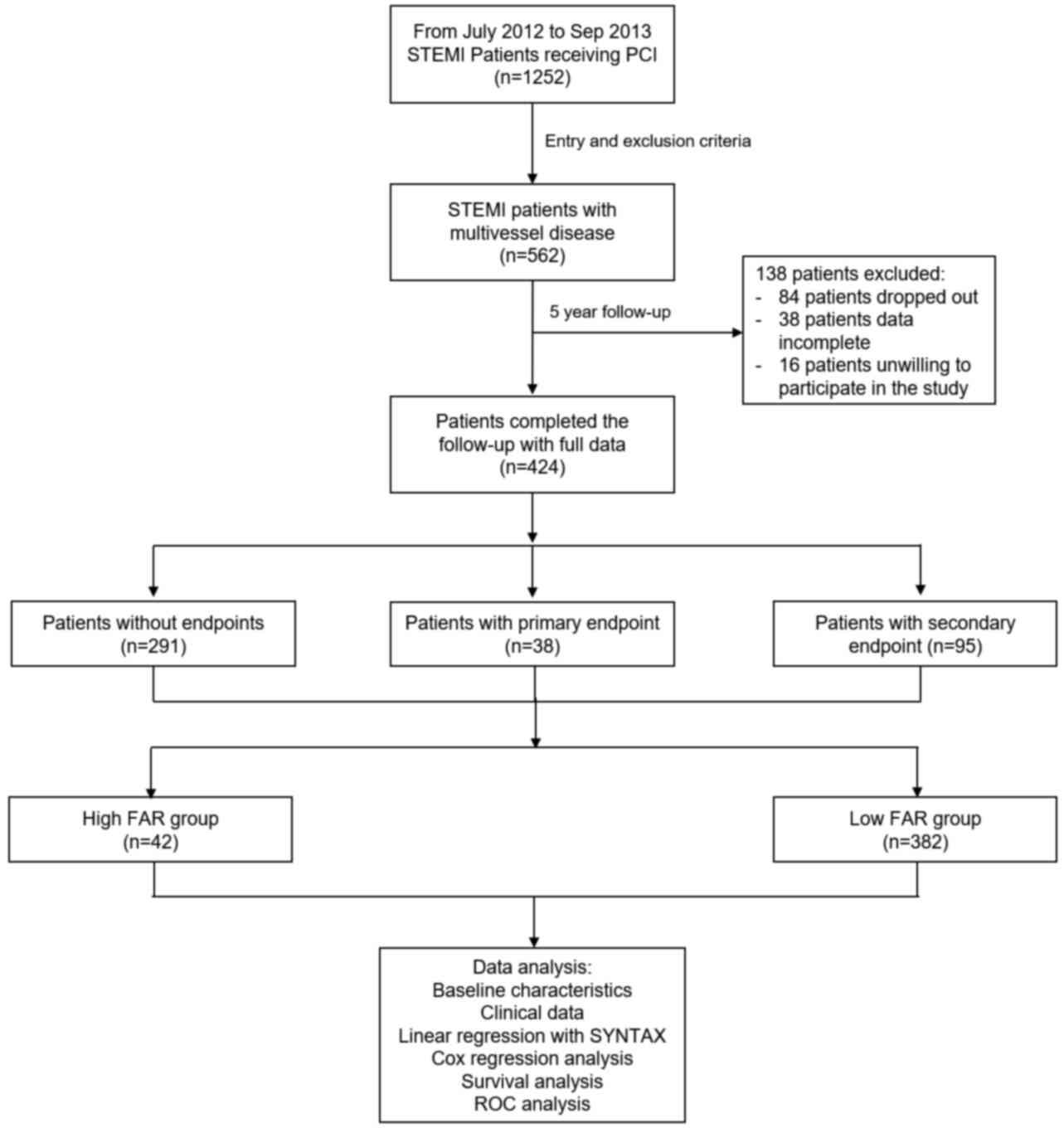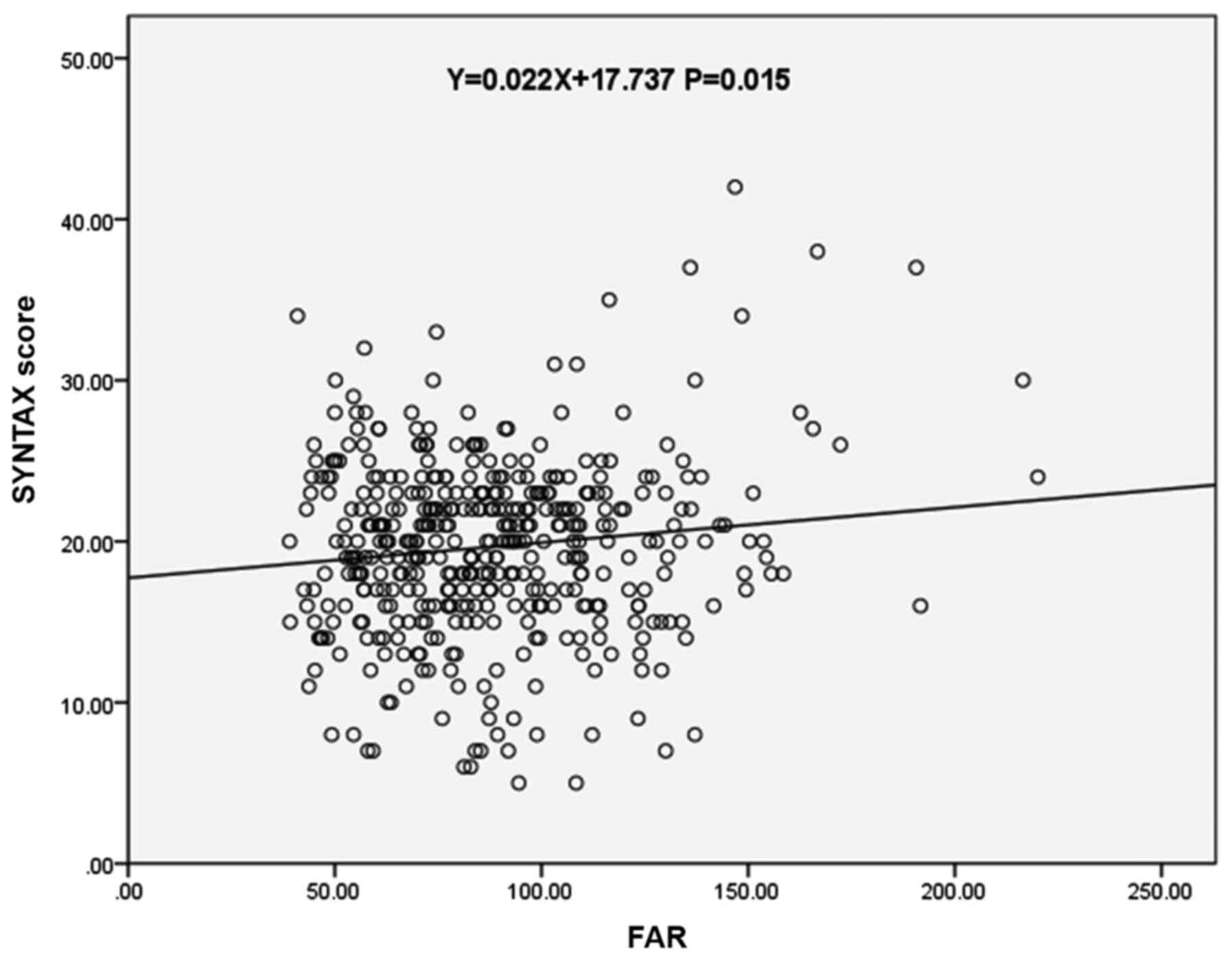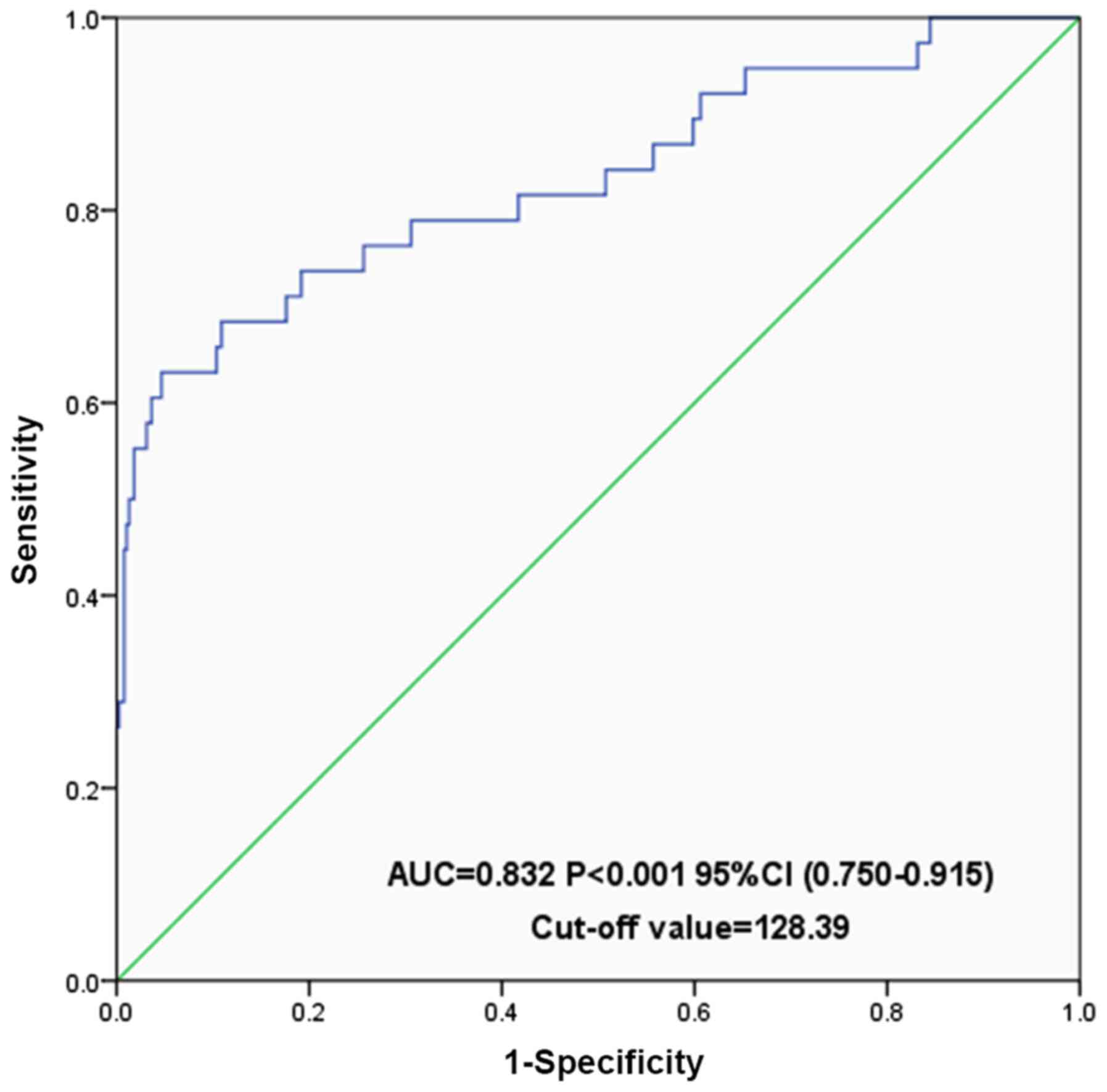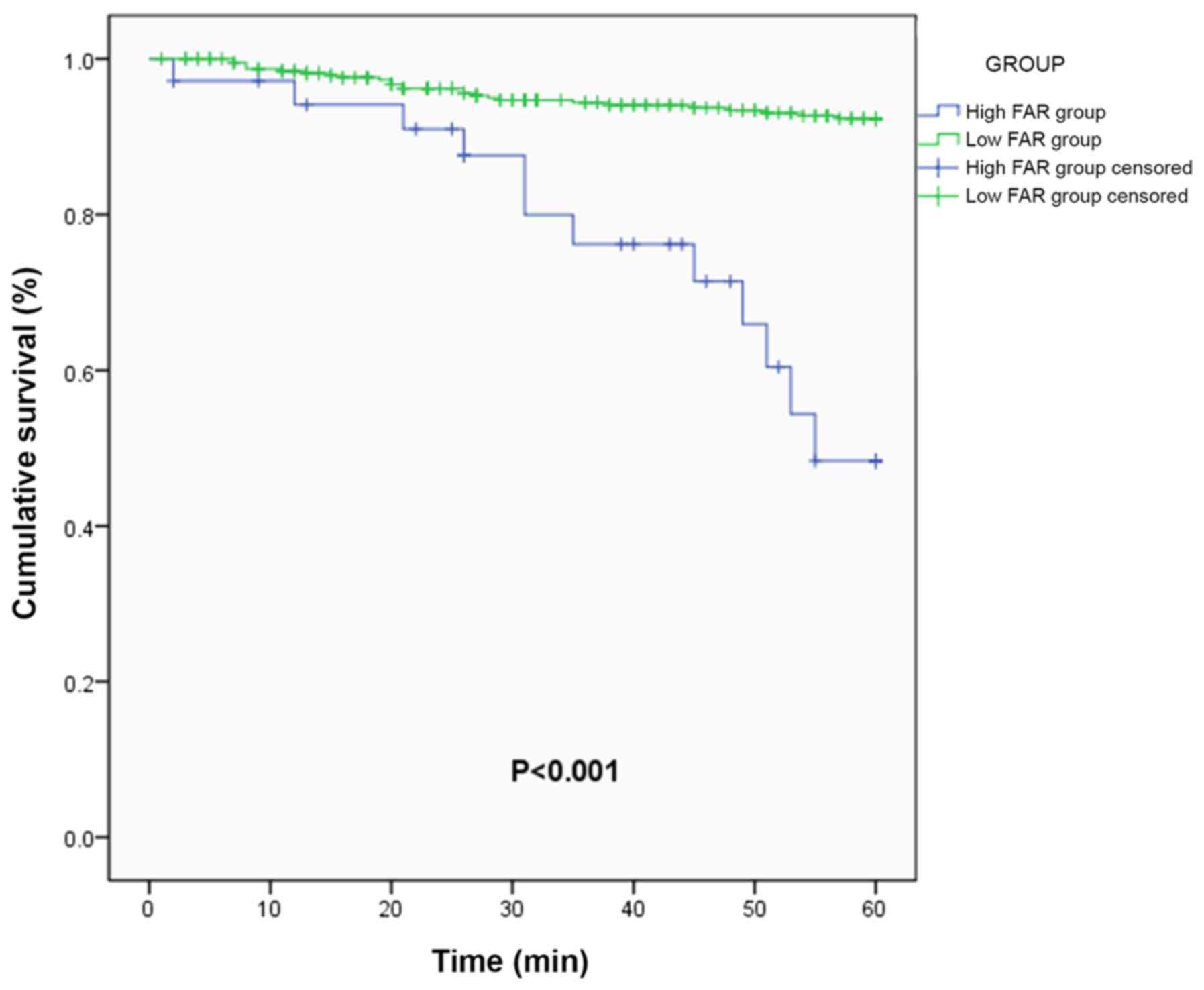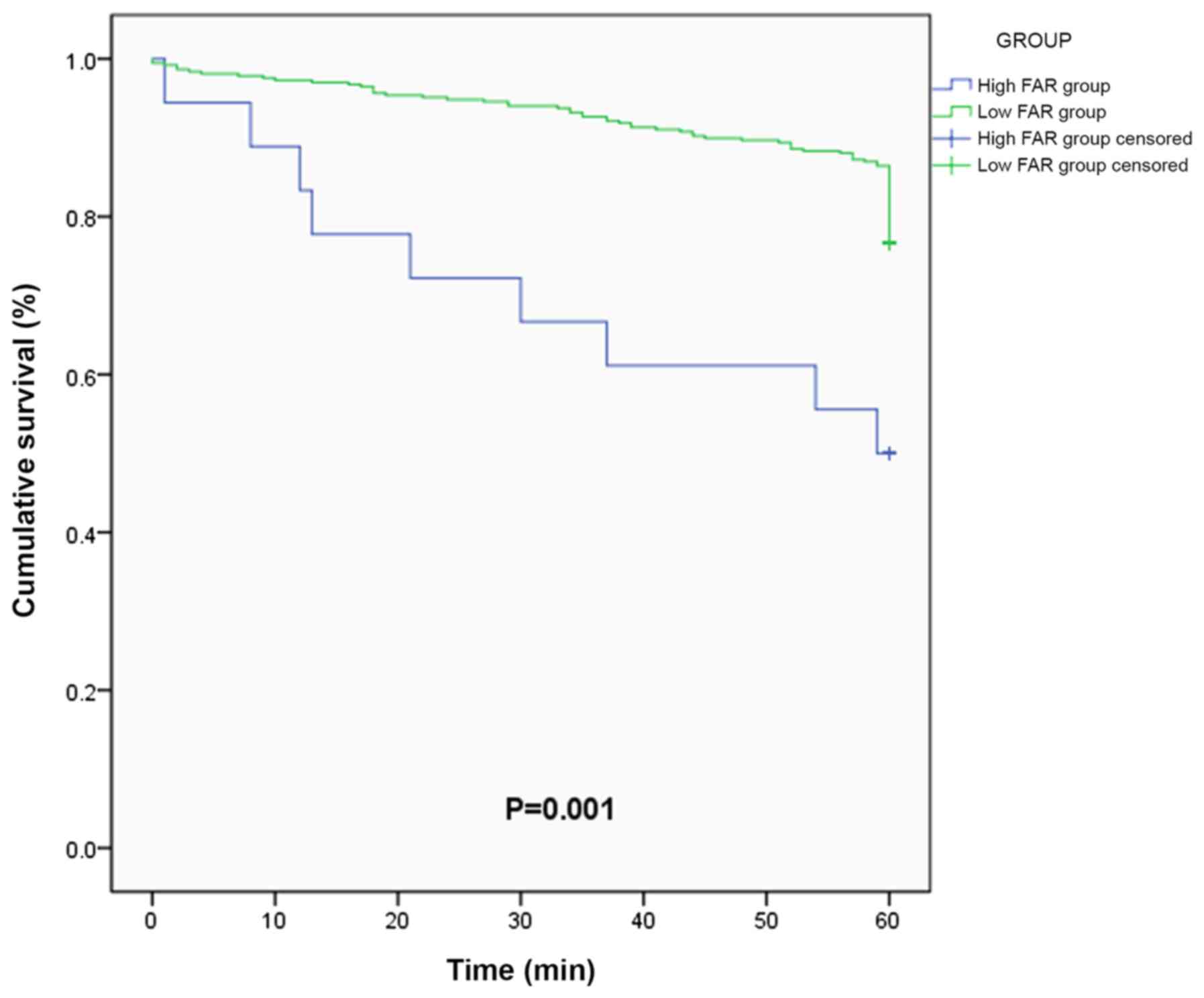|
1
|
Vogel B, Mehta SR and Mehran R:
Reperfusion strategies in acute myocardial infarction and
multivessel disease. Nat Rev Cardiol. 14:665–678. 2017.PubMed/NCBI View Article : Google Scholar
|
|
2
|
de Waha S, Eitel I, Desch S, Fuernau G,
Pöss J, Schuler G and Thiele H: Impact of multivessel coronary
artery disease on reperfusion success in patients with ST-elevation
myocardial infarction: A substudy of the AIDA STEMI trial. Eur
Heart J Acute Cardiovas Care. 6:592–600. 2017.PubMed/NCBI View Article : Google Scholar
|
|
3
|
Bates ER, Tamis-Holland JE, Bittl JA,
O'Gara PT and Levine GN: PCI strategies in patients with ST-segment
elevation myocardial infarction and multivessel coronary artery
disease. J Am Coll Cardiol. 68:1066–1081. 2016.PubMed/NCBI View Article : Google Scholar
|
|
4
|
Braga CG, Cid-Alvarez AB, Dieguez AR,
Alarez BA, Otero DL, Sánchez RO, Pena XS, Salvado VG, Trillo-Nouche
R and González-Juanatey JR: Prognostic impact of residual SYNTAX
score in patients with ST-elevation myocardial infarction and
multivessel disease: Analysis of an 8-year all-comers registry. Int
J Cardiol. 243:21–26. 2017.PubMed/NCBI View Article : Google Scholar
|
|
5
|
Wilhelmsen L, Svardsudd K, Korsan-Bengtsen
K, Larsson B, Welin L and Tibblin G: Fibrinogen as a risk factor
for stroke and myocardial infarction. N Engl J Med. 311:501–505.
1984.PubMed/NCBI View Article : Google Scholar
|
|
6
|
Nelson JJ, Liao D, Sharrett AR, Folsom AR,
Chambless LE, Shahar E, Szklo M, Eckfeldt J and Heiss G: Serum
albumin level as a predictor of incident coronary heart disease:
The atherosclerosis risk in communities (ARIC) study. Am J
Epidemiol. 151:468–477. 2000.PubMed/NCBI View Article : Google Scholar
|
|
7
|
Kijima T, Arigami T, Uchikado Y, Uenosono
Y, Kita Y, Owaki T, Mori S, Kurahara H, Kijima Y and Okumura H:
Combined fibrinogen and neutrophil-lymphocyte ratio as a prognostic
marker of advanced esophageal squamous cell carcinoma. Cancer Med.
108:193–199. 2017.PubMed/NCBI View Article : Google Scholar
|
|
8
|
Li SQ, Jiang YH, Lin J, Zhang J, Sun F,
Gao QF, Zhang L, Chen QG, Wang XZ and Ying HQ:
Albumin-to-fibrinogen ratio as a promising biomarker to predict
clinical outcome of non-small cell lung cancer individuals. Cancer
Med. 7:1221–1231. 2018.PubMed/NCBI View Article : Google Scholar
|
|
9
|
Sun F, Tan YA, Gao QF, Li SQ, Zhang J,
Chen QG, Jiang YH, Zhang L, Ying HQ and Wang XZ: Circulating
fibrinogen to pre-albumin ratio is a promising biomarker for
diagnosis of colorectal cancer. J Clin Lab Anal.
33(e22635)2019.PubMed/NCBI View Article : Google Scholar
|
|
10
|
Xu WY, Zhang HH, Xiong JP, Yang XB, Bai Y,
Lin JZ, Long JY, Zheng YC, Zhao HT and Sang XT: Prognostic
significance of the fibrinogen-to-albumin ratio in gallbladder
cancer patients. World J Gastroenterol. 24:3281–3292.
2018.PubMed/NCBI View Article : Google Scholar
|
|
11
|
Karahan O, Acet H, Ertas F, Tezcan O,
Çalişkan A, Demir M, Kaya AF, Demirtaş S, Çevik MU and Yavuz C: The
relationship between fibrinogen to albumin ratio and severity of
coronary artery disease in patients with STEMI. Am J Emerg Med.
34:1037–1042. 2016.PubMed/NCBI View Article : Google Scholar
|
|
12
|
Task Force on the management of ST-segment
elevation acute myocardial infarction of the European Society of
Cardiology (ESC). Steg PG, James SK, Atar D, Badano LP,
Blömstrom-Lundqvist C, Borger MA, Di Mario C, Dickstein K, Ducrocq
G, et al: ESC Guidelines for the management of acute myocardial
infarction in patients presenting with ST-segment elevation. Eur
Heart J. 33:2569–2619. 2012.PubMed/NCBI View Article : Google Scholar
|
|
13
|
Ibanez B, James S, Agewall S, Antunes MJ,
Bucciarelli-Ducci C, Bueno H, Caforio ALP, Crea F, Goudevenos JA,
Halvorsen S, et al: 2017 ESC Guidelines for the management of acute
myocardial infarction in patients presenting with ST-segment
elevation: The task force for the management of acute myocardial
infarction in patients presenting with ST-segment elevation of the
European Society of Cardiology (ESC). Eur Heart J. 39:119–177.
2018.PubMed/NCBI View Article : Google Scholar
|
|
14
|
Lee JM, Rhee TM, Kim HK, Hwang D, Lee SH,
Choi KH, Kim J, Park TK, Yang JH, Song YB, et al: Comparison of
long-term clinical outcome between multivessel percutaneous
coronary intervention versus infarct-related artery-only
revascularization for patients with St-segment-elevation myocardial
infarction with cardiogenic shock. J Am Heart Assoc.
8(e013870)2019.PubMed/NCBI View Article : Google Scholar
|
|
15
|
Bohula EA, Morrow DA, Giugliano RP,
Blazing MA, He P, Park JG, Murphy SA, White JA, Kesaniemi YA,
Pedersen TR, et al: Atherothrombotic risk stratification and
ezetimibe for secondary prevention. J Am Coll Cardiol. 69:911–921.
2017.PubMed/NCBI View Article : Google Scholar
|
|
16
|
Cetin M, Erdoğan T, Kırış T, Özer S,
Yılmaz AS, Durak H, Aykan AÇ and Şatıroğlu Ö: Predictive value of
fibrinogen-to-albumin ratio in acute coronary syndrome. Herz: Aug
6, 2019 (Epub ahead of print).
|
|
17
|
Kayapinar O, Ozde C and Kaya A:
Relationship between the reciprocal change in inflammation-related
biomarkers (fibrinogen-to-albumin and hsCRP-to-albumin ratios) and
the presence and severity of coronary slow flow. Clin Appl Thromb
Hemost. 25(1076029619835383)2019.PubMed/NCBI View Article : Google Scholar
|
|
18
|
Zhao Y, Yang J, Ji Y, Wang S, Wang T, Wang
F and Tang J: Usefulness of fibrinogen-to-albumin ratio to predict
no-reflow and short-term prognosis in patients with ST-segment
elevation myocardial infarction undergoing primary percutaneous
coronary intervention. Heart Vessels. 34:1600–1607. 2019.PubMed/NCBI View Article : Google Scholar
|
|
19
|
Tarantini G, D'Amico G, Brener SJ,
Tellaroli P, Basile M, Schiavo A, Mojoli M, Fraccaro C, Marchese A,
Musumeci G and Stone GW: Survival after varying revascularization
strategies in patients with ST-segment elevation myocardial
infarction and multivessel coronary artery disease: A pairwise and
network meta-analysis. JACC Cardiovas Interv. 9:1765–1776.
2016.PubMed/NCBI View Article : Google Scholar
|
|
20
|
Di Pasquale G, Filippini E, Pavesi PC,
Tortorici G, Casella G and Sangiorgio P: Complete versus
culprit-only revascularization in ST-elevation myocardial
infarction and multivessel disease. Int Emerg Med. 11:499–506.
2016.PubMed/NCBI View Article : Google Scholar
|
|
21
|
O'Donoghue ML, Morrow DA, Cannon CP,
Jarolim P, Desai NR, Sherwood MW, Murphy SA, Gerszten RE and
Sabatine MS: Multimarker risk stratification in patients with acute
myocardial infarction. J Am Heart Assoc. 5(pii:
e002586)2016.PubMed/NCBI View Article : Google Scholar
|
|
22
|
Sanchez PL, Morinigo JL, Pabon P, Martin
F, Piedra I, Palacios IF and Martin-Luengo C: Prognostic relations
between inflammatory markers and mortality in diabetic patients
with non-ST elevation acute coronary syndrome. Heart. 90:264–269.
2004.PubMed/NCBI View Article : Google Scholar
|















